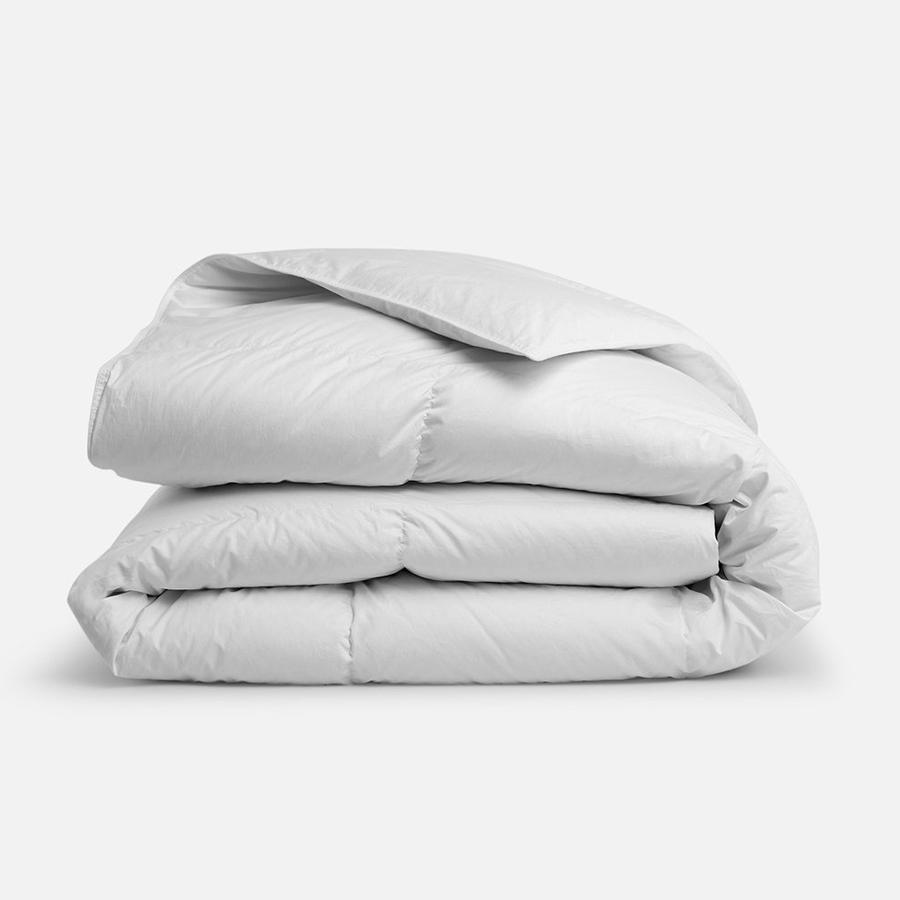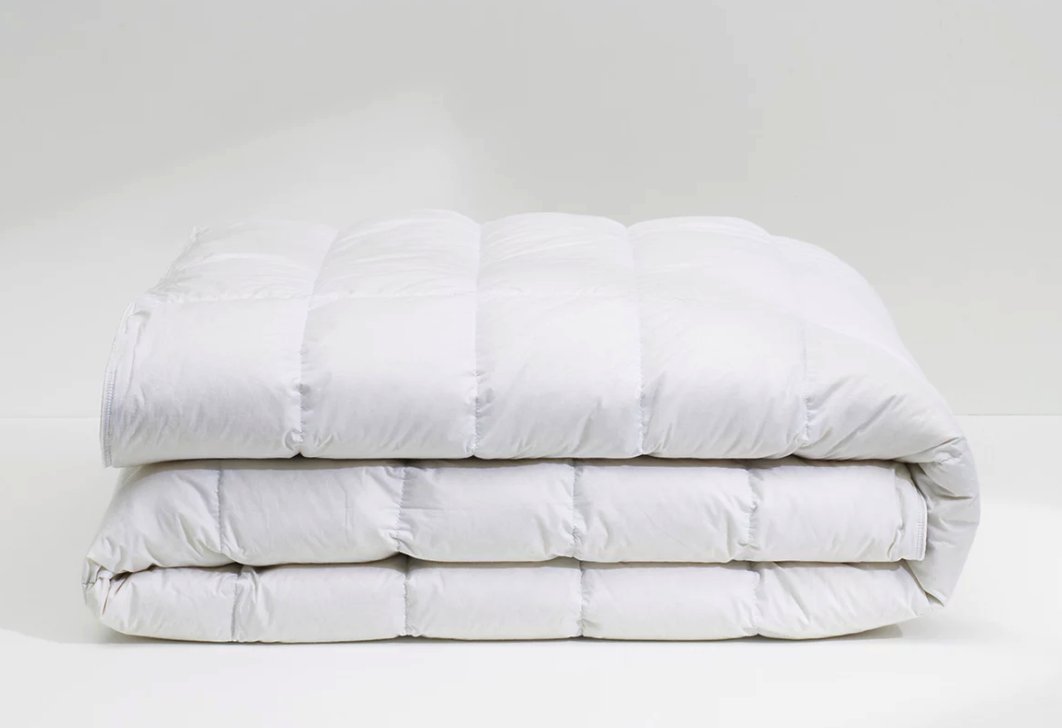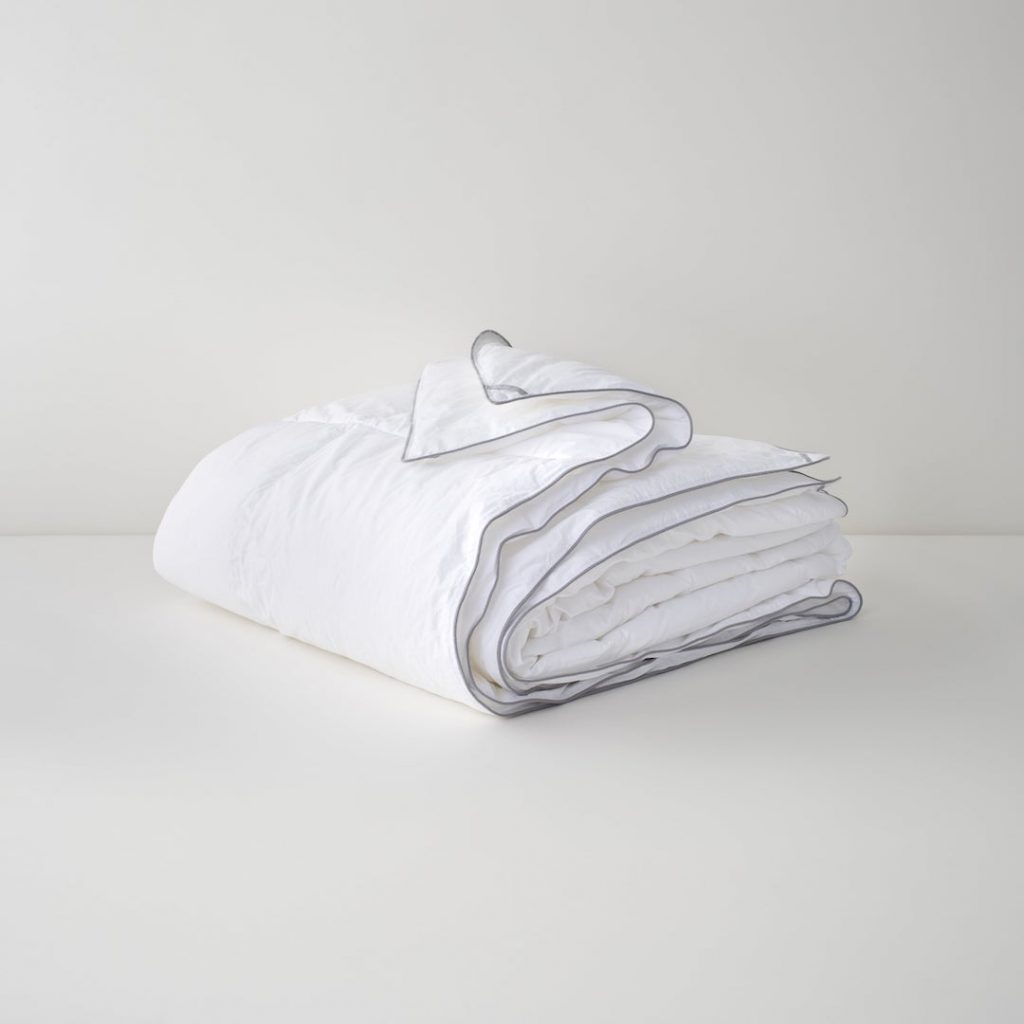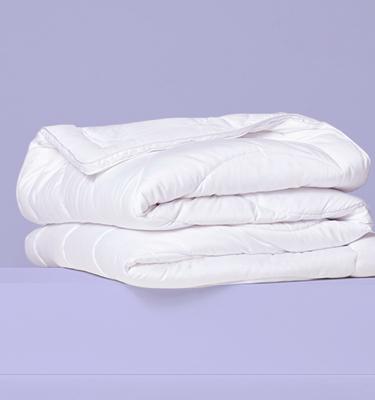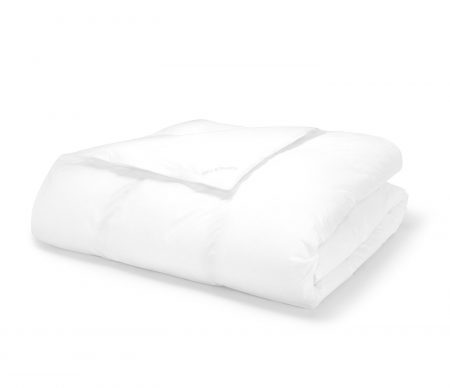Buying Guide – How to Shop for a Duvet Insert
Duvet inserts come with many benefits, including the ease of cleaning and style variety afforded by their removable cover. Duvets also come in a variety of warmths, allowing you to choose one that suits your climate and personal preferences. If you are considering purchasing a duvet insert for your bed, our buying guide will help you select the best duvet insert for your needs.
We’ll walk you through how to choose a duvet insert based on fill material, fill power, and shell material. Then, we’ll discuss the different types of stitching typically seen in duvet inserts, in addition to the different sizes and their pricing. Finally, we’ll touch on the process of cleaning your duvet insert before weighing the benefits of choosing a duvet insert over a comforter.
What is a Duvet Insert?
Frequently confused with comforters, duvet inserts feature slight — but important — differences from their comforter cousins. Originating in Europe, duvet inserts or simply “duvets” were traditionally stuffed with down. Today, you’ll find down duvet inserts stuffed with down along with those stuffed with feathers and synthetic fibers. Duvets are typically white or off white in color.
Comforters are also similarly often filled with down, feathers, and synthetic fibers. The key difference between the two types of bedding lies in the necessity — or lack thereof — for a protective cover. Duvets are designed to be used with a removable casing or “duvet cover” to protect them from body oil, spills, and damage.
Comforters, on the other hand, are designed to be used without a cover and may require a top sheet to act as a hygienic barrier between your body and the bedding. Even though it is not required, some sleepers may opt to use a duvet cover with their comforter to protect it as they would a duvet.
Key Considerations for Duvet Insert Shoppers
When it comes to choosing a duvet insert, there are several principal factors to consider, including fill material, fill power, shell material, and construction. The following sections will help you with selecting each one.
Fill Materials
The fill material is the “stuffing” inside the duvet insert. Below, we explore the most common fill materials.
- Goose down: The soft plumage found on the underbelly of geese, goose down is luxurious, fluffy, and naturally insulates heat. One drawback of goose down is its allergy potential, as some sleepers may be allergic to this filling.
- Duck down: Similar to goose down, duck down is the soft, fluffy fibers on the underbelly of the bird that naturally insulates heat. Duck down is generally smaller and less fluffy than goose down, in addition to being more affordable. As with goose down, duck down can also trigger some people’s allergies.
- Down alternative: Crafted from polyester microfibers, down alternative is designed to mimic the look and feel of genuine down. Down alternative duvet inserts tend to be less expensive than true duck and goose down, and do not trigger allergy issues. However, quality varies, and lower-quality synthetic down may be less durable than premium options, such as Primaloft and gel-fiber.
- Cotton: Cotton filling is soft, breathable, machine-washable, and fairly affordable. However, in colder temperatures, cotton may not provide adequate warmth.
- Wool: Unlike cotton, wool duvet inserts offer plenty of warmth during colder months. However, during the warmer months, wool is naturally breathable and moisture-wicking. Because wool has a lower loft than down, wool duvet inserts are often heavier so they can offer additional warmth.
- Silk: Ideal for summer months, silk is light and soft. However, the material may lack the warmth and loft to keep sleepers warm in colder temperatures.
Fill Power
When searching for a duvet insert, you will likely encounter the term “fill power, or the measurement of the amount of space one ounce of filling will occupy. Fill power essentially tells you the duvet’s fluffiness; a higher fill power indicates a thicker and more insulating product with a higher loft. It’s also worth noting that in addition to providing more warmth, higher fill power means larger, more durable down clusters that tend to maintain their loft and firmness for longer.
We’ve included a general guide to duvet insert fill power options below:
- Less than 400: Duvet inserts with a fill power below 400 are typically lightweight with a low loft, making them ideal for summer months and warmer climates. Duvets with less than 400 fill power may also be suitable for those who sleep hot.
- 400-600: Duvets with a fill power between 400 and 600 will feature a higher loft and be acceptable for most climates. For colder nights, however, they may provide insufficient warmth for those who do not naturally sleep hot.
- 600-800: Duvet inserts with this level of fill power have a high loft and work well in all seasons, particularly if you run cold.
- 800+: These are the duvets with the highest loft, warmth, and durability. These are best for winter months and cold climates, in addition to being well-suited for users who sleep cold.
Shell Material
Although duvet inserts are kept beneath protective covers, their shell material is still worth considering. Here are some of the most common shell materials and their benefits and drawbacks:
- Cotton: Cotton is affordable, breathable, and widely available. When choosing a duvet with a cotton shell, look for one with a thread count of 300 or above to ensure durability. Cotton duvets are often machine washable.
- Polyester: Polyester is a synthetic fabric known for its durability and affordability. However, compared to cotton, polyester can trap heat and moisture in hot environments. This material is also machine-washable.
- Cotton-polyester blends: When combined with cotton, polyester is able to offer breathability in addition to strength and durability. Cotton-polyester blends are less prone to pilling, static, shrinkage, and wrinkling.
Construction
Construction or stitch design may play a part in your decision to choose a duvet insert. Read on to learn the pros and cons of common stitching:
- Box-stitch/sewn-through: A sewn-through duvet is stitched into pockets that hold the fill in place. With sewn-through stitching, the filling is held firmly in place, but may not retain loft as well as other types of duvets.
- Baffle-box: With baffle-box stitching, an additional piece of fabric is used to connect the top of the duvet insert to the bottom. This allows the duvet to maintain more loft, but may require more routine fluffing.
- Channel construction: Channel-style stitching involves creating long rows or baffles that run down the length of the duvet from the comforter to the head. Without a high quality down, however, the fill can easily slide out of place with this type of stitching.
- Gusset: Gusset stitching connects the top and bottom of the duvet by sewing them around the edge. With fabric “walls” around the sides, a gusseted duvet insert can have a more loft.
Sizing
Duvet inserts typically come in sizes that correspond to bed sizes, including Twin/Twin XL, Double/Full, Queen, King, California King. If you don’t have a bedskirt or prefer some overhang, however, consider ordering a duvet that is one size above your mattress size.
Cleaning and Care
Duvet inserts should be washed every two to three months. Before washing, be sure to check the label: many materials, including down and feather, may require dry cleaning.
When machine-washing your duvet, treat stains first by shaking the filling away from the dirty spot and hand washing the stain. If you are having trouble fitting a larger duvet into a conventional machine, ensure there is sufficient room surrounding the drum, then fold the duvet in half before spreading it out in your machine. You may need to take your duvet to a laundromat with commercial-sized machines.
Let your duvet air dry if possible.
Duvets can vary vastly in pricing depending on material, design, and size. Pricing can start below $85 and exceed $1,000. Materials like humanely harvested goose down or wool tend to fetch a premium, as does silk. Meanwhile, down alternative and blended materials tend to be cheaper.
Return Policy and Warranty
As with pricing, return policies and warranties on duvets can vary vastly depending on manufacturer. We’ve seen everything from 100-night sleep trials and lifetime warranties to no-return policies. Keep in mind that a reputable manufacturer should offer a multi-week return policy, at least a one year warranty, or both.
Duvet Inserts vs. Comforters
There are many benefits to both duvets and comforters. That said, the following are reasons why you may prefer a duvet insert for your home:
- Ease of wash: Thanks to their covers, duvets are protected from dirt, residue, and build-up. When the duvet needs cleaning, the cover can simply be removed and tossed in the wash. By contrast, many comforters must be dry-cleaned.
- Design versatility: Because duvet covers can be easily swapped out for others, it’s easy to shake up your bedroom design with new colors and patterns without purchasing a new comforter.
- Fill diversity: Duvet inserts often feature more fill choices, and can include hard-to-clean materials like down.
For more information about duvet inserts, comforters, and other types of bedding, please visit the Tuck.com guides listed below.
Additional Resources
